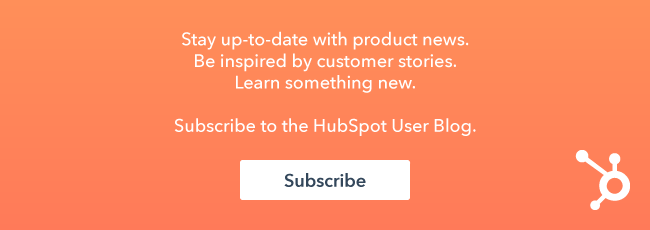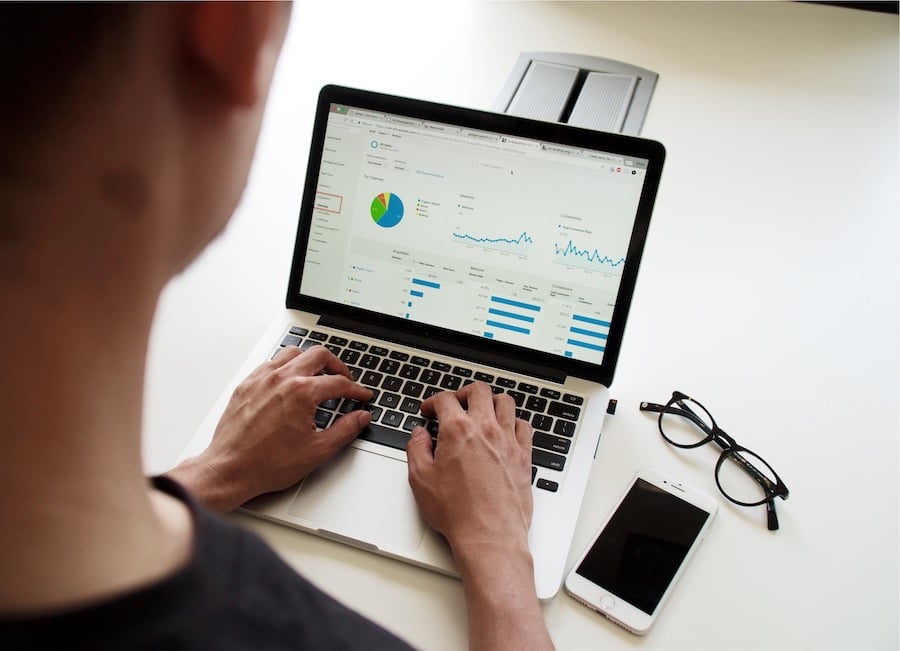Data has a bad reputation. Often associated with terms like "cold" or "emotionless", it can be hard to see where it fits in with relationship-centric industries like marketing and sales. At the same time, it allows you to see performance metrics like email opens or how many visitors booked meetings in a given month.

So, where's the balance? Understanding how data and inbound fit together can be key to ensuring you're making the most out of your reporting and analytics in a human, helpful, and holistic way.
Over time, the inbound methodology has evolved. In 2012, this was the road map marketers and sales reps used:

An emphasis was placed on the stage "analyze", which was about using your data to optimize all of your processes for further improvement.
Over time, this stage, dedicated to calling out the role of data was removed and we arrived at the inbound methodology we see today:

The role of data in the inbound methodology's current form is implied. Rather than just the one stage, data should be enabling you to check the performance and improve your efforts in the attract, convert, close, and delight stages.
What this looks like will differ. Reports like traffic analytics help you drill into top-of-the-funnel traffic and lead generating conversions for the attract and convert stages . Similarly, tools like pipeline and funnel reporting or even inboxes like conversations can help check on how well your sales and services teams are executing in the close and delight stages.
Reporting and analyzing should occur throughout the stages of inbound. But how do you ensure your applying it without taking the humanity completely out of marketing or sales?
That brings us to the key tenets of being human, helpful, and holistic. Let's dig into each one.
Being human
With the use of automation tools, marketing and sales teams today are enabled to provide meaningful one-to-many interactions. But as the famous saying goes, with great power comes great responsibility. As new advances in technology create new ways to communicate with visitors, it seems the human is being removed from the conversation. Combine messaging apps and chatbots with the power of reporting and it may seem like you're running the risk of completely removing people from the situation.
This doesn't have to be the case, and indeed, if you're aligning your data with the principles of inbound, this shouldn't be the case. The power of having strong brand voice and tone is that the conversational nature between you and your visitor gets preserved. You may be conveying information and offers through a screen, but the presence of your company should never be lost.

The problem? Without an ability to gauge how your audience is reacting, the conversation becomes a little one sided. You can't see your visitors' body language and hearing their responses can be limited to feedback mechanisms such as comments or NPS surveys.
So what do you do?
You turn to data. Points like conversion rates, click-through rates, and page views are all giving you feedback signals. They are points of communication, letting your know if the interaction is going well or if you need to change your approach. You should never be going into or leaving an exchange with a potential lead or customer blind. Data helps you get a sense on how the relationship is going on their end.
So while data can be a key metric in grading your performance, interpreting the story from a visitor's perspective is just as important. Looking beyond the numbers and seeing your visitors is a key part of marketing and sales. It's about maintaining empathy and that's going to be how you keep the humanity of both industries front and center.
Being helpful
The inbound methodology and the buyer's journey showcase that delivering the right information at the right time is the best way to tailor a great experience. But without reports empirically showing how your website traffic is reacting to content, you're basing a lot of your effort off speculation and abstract buyer personas.

Optimization and experimentations involves testing and crunching numbers, but the core is still focusing on solving for your website user. What types of resources or conversion opportunities do they want in the format they prefer? In short, how do you make your website as helpful as possible?
You won't know until you experiment. And as Brian Halligan likes to say, feedback truly is the breakfast of champions. Installing a systematic process of doing so will only make your business stronger and your website better.
Interested in the ways data can help improve your website design? Check out the Growth Driven Design Course!
Being holistic
At the end of the day, being data-driven and relationship focused should not be seen as a binary. If you prioritize one over the other, you could run the risk losing the strengths each bring to your team.

Taking a holistic approach by using an empathetic and data-driven approach attracting, converting, closing, and delighting users means executing inbound with excellence. It ensures you're best informed about your performance with your visitors, leads, and customers and continuing to create exception experiences for your online audience.










